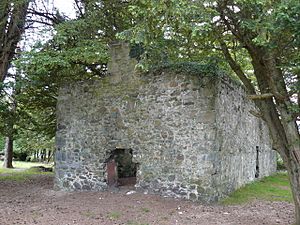Inchmoan facts for kids
Inchmoan is a small island located in Loch Lomond, Scotland. Its name comes from the Scottish Gaelic words Innis na Mòna or Innis-Mòine, which mean 'peat island'. This name tells us a lot about the island's past!
Exploring Inchmoan's Geography
Inchmoan is part of a group of islands found just south of Luss. Only a short stretch of water separates it from the nearby island of Inchcruin. The water between these two islands is very shallow, often only a foot or two deep. This means you can sometimes even wade between them!
Inchmoan is famous for its large, sandy beaches. The island itself is quite low to the ground and has some marshy areas. It has sandy beaches on both sides. This is great because on a sunny day, at least one side will be sheltered from the wind. Because of its beautiful beaches, Inchmoan is a popular spot for campers and people enjoying picnics.
The island was once owned by the Colquhoun family, who lived in Luss. Today, it is owned by Luss Estates. There is a large, two-story ruined building on the western side of the island. No one knows for sure who lived there or when.
The name 'Inchmoan' comes from how the people of Luss used the island. They would collect peat from Inchmoan to use as fuel for their fires in the village.
The sandy beaches and bays around the island are generally safe for swimming. However, the middle of the island can be very difficult to walk through. This is because of thick plants like rhododendrons, gorse, and other spreading trees.
A Look at Inchmoan's History
Evidence suggests that people have visited Inchmoan for a very long time. Tools from the Stone Age have been found on the island. This shows that humans were present there many years ago. As mentioned, there is also the ruin of an old cottage on the island.
Plants and Trees of Inchmoan
Even though its name means 'peat island', Inchmoan has a wide variety of plant life. You can find many different types of plants and trees growing there. Some of these include:
- Pear trees
- Blueberry bushes
- Alder trees
- Gorse bushes
- Birch trees
- Rhododendron plants
- Scots pine trees
- Bog myrtle


